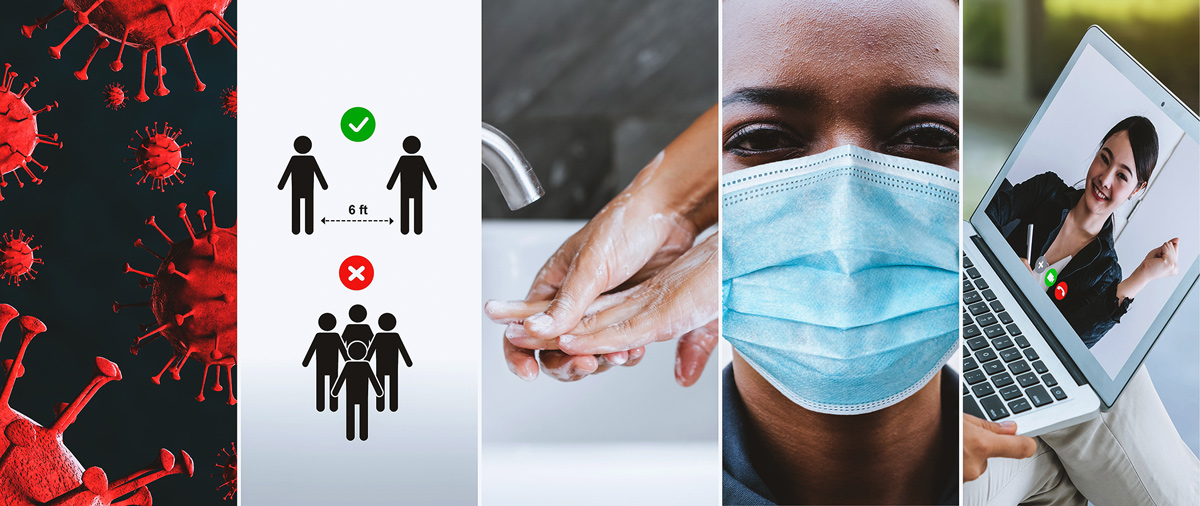By Andi Gray
Dilemma: Lately we’ve been dealing with many stupid, careless injuries. I care a lot about my workforce, and I want this to be a safer place to work. In fact, I want my company to be known for being a leader in safety in the workplace. How do I get from here to there?
Thoughts of the Day: Put the company on a mission. Slow down the pace and implement (or update) training programs. Make sure everyone understands the priorities.
Editor’s note: This updated classic Ask Andi column is very relevant today. COVID is obviously the prominent safety issue in 2020, but as we shuffle offices and consolidate maintenance areas, it’s a good reminder that workplace safety encompasses more than just the pandemic. Preserving cash should not come at the detriment of safety—no one needs a workers’ comp claim for avoidable accidents. As you’re updating your protocols to fit into a COVID world, which may include new cleaning products or standards, now is a good time to make sure that you’re also in compliance with the basics.
 It starts with you, at the top, recognizing that safety has costs. When people get hurt, their families get hurt. Co-workers have to work harder to cover for the injured person. Bills mount up to treat and heal the injury. That’s just on the surface.
It starts with you, at the top, recognizing that safety has costs. When people get hurt, their families get hurt. Co-workers have to work harder to cover for the injured person. Bills mount up to treat and heal the injury. That’s just on the surface.
When you have an essential worker on the sidelines, more falls on you and your team to pick up the slack at a time when you’re likely already running a lean workplace. If it involves your vehicles, company reputation may be harmed, making it harder to attract and retain safety-minded personnel and top-notch customers when every run is precious. Fines and inspections may eat away at productivity and profits. All summed up, it’s much better to build a culture of safety.
Start by slowing down the pace of activity. The team may be juggling more, causing them to rush through things. On the other hand, so much focus may be placed on worrying about the virus that corners are cut with other hazards such as not properly storing cleaning materials, not maintaining the facility, getting lax with masks and hand washing, or failing to follow the written steps when securing the facility due to a local emergency (fires, floods, hurricanes, etc.).
Treat safety by making it visible and giving it priority. Have zero tolerance for taking short cuts. When there’s an incident, require that it be documented and discussed at staff meetings. Follow incidents all the way up the chain of command. Keep records for reviews, rewarding safety and penalizing dangerous behavior.
OSHA has a ton of recourses available on its website for download, from hurricane preparedness to COVID. Here are some important links:
• COVID protocols for transportation services
• On-site consulting for small businesses
• Alphabetical listing of safety topics
• Employer responsibilities for a safe workplace
Make a list of all possible safety issues that could hit your company: It’s more than just dealing with an injury. Include illness, accidents inside the building and outside, security, and even interpersonal conflict.
Get everyone to take responsibility for making your business a safer place to work. Ask each employee to own one safety issue. Assign overseers who others can go to if they need to report something untoward. Offer confidentiality and freedom from retribution for whistleblowers.
Find out who in your industry is doing an excellent job at safety, and refer to local and national organizations for help. Identify benchmark companies and experts in your field. Make sure people know how to perform safely before putting new methods into general use.
Build a list of safety training resources. OSHA should be referenced frequently as it provides a wealth of information, but also include your local and state health department. For our industry, many associations, insurance companies, and even finance companies offer industry specific courses. Private consulting companies offer a variety of services from workplace assessments to assistance building safety manuals and train-the-trainer programs, right on down to on-site training—just be sure to check references.
 Andi Gray Strategy Leaders
Andi Gray Strategy Leaders
Make it mandatory that every employee participates in safety training, especially as employees return to work following furloughs or after updating your safety manual. Show employees and vendors the role safety plays in the company’s priorities. Help people make the right decisions in their day-to-day work environment by giving them practice in the classroom. Make it clear that a safe work environment comes from every watching everyone’s back, all the time. [CD1020]
Andi Gray is the founder of the Business Consulting Firm Strategy Leaders. She can be reached at andi@strategyleaders.com.

